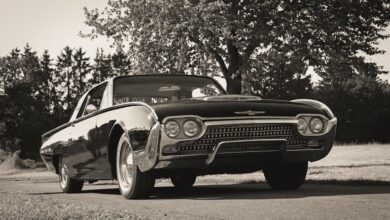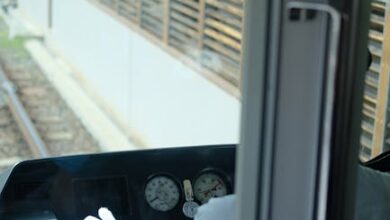The Unseen Bullet: When Space Debris Becomes a Deadly Threat

The vast, silent expanse of space is often portrayed as the ultimate frontier of human achievement and exploration. But what happens when that boundless void turns into an inescapable trap? Imagine for a moment the chilling reality: three individuals, hundreds of miles above Earth, tethered to a space station that is their only sanctuary, yet staring at their only ride home – a ride now critically damaged. This isn’t the plot of a sci-fi blockbuster; it’s the harrowing predicament currently facing three Chinese astronauts aboard the Tiangong space station.
Recent reports have sent a ripple of alarm through the global space community. The Shenzhou craft, the sole vessel docked with Tiangong and intended for the crew’s return, has been compromised. The damage, reportedly from a collision with space debris, is severe enough that it “does not meet the release conditions for a safe manned return.” For Commander Jing Haipeng and his two fellow crew members, Zhu Yangzhu and Gui Haichao, their mission has abruptly shifted from scientific endeavor to a battle for survival. They are, in essence, stranded in orbit.
The Unseen Bullet: When Space Debris Becomes a Deadly Threat
The news of the Shenzhou craft’s damage underscores a threat that has quietly escalated for decades: space debris. To the uninitiated, the idea of a collision in the vast emptiness of space might seem improbable. But near-Earth orbit, particularly Low Earth Orbit (LEO), is not as empty as one might imagine. It’s increasingly congested with a startling array of man-made objects.
Think of it as an invisible minefield. This debris ranges from spent rocket stages and defunct satellites – some as large as a bus – to tiny paint flecks, nuts, bolts, and fragments from past collisions. Each piece, no matter how small, travels at incredible orbital velocities, often exceeding 17,500 miles per hour (28,000 km/h). At these speeds, even a marble-sized object can strike with the kinetic energy of a hand grenade, while something the size of a golf ball can be utterly catastrophic.
A Growing Cloud of Danger
The incident with the Shenzhou craft is a stark, tangible reminder of the peril. While the exact size and nature of the debris that struck the craft are yet to be fully disclosed, the outcome is clear: structural integrity has been compromised. This isn’t just a minor dent; it’s damage that could jeopardize the craft’s ability to safely re-enter Earth’s atmosphere, withstand the intense heat of atmospheric friction, or deploy its parachutes correctly.
The sheer volume of orbital debris is staggering. Agencies like the U.S. Space Surveillance Network track over 30,000 pieces of space junk larger than 10 centimeters. Millions more, too small to track, crisscross orbital pathways. This ever-growing cloud, often referred to in the context of the dreaded Kessler Syndrome, posits a future where collisions generate more debris, leading to a cascade effect that could render certain orbits unusable for generations.
The Clock Is Ticking: Challenges of an Orbital Rescue
For the three Chinese astronauts, the immediate priority is clear: survival and rescue. But orchestrating a rescue in space is an incredibly complex undertaking, unlike any terrestrial emergency. It requires immense logistical planning, precise engineering, and a race against time and resources. This isn’t a scenario where a helicopter can be scrambled in minutes.
The Tiangong space station itself offers a lifeline. It’s a robust, habitable environment capable of sustaining the crew for an extended period, equipped with life support systems, food, water, and power. This buys crucial time for mission control on Earth to devise a solution. But how much time? While space stations are designed for long-duration missions, the psychological toll of knowing your only ride home is broken, combined with the finite resources, adds immense pressure.
What Are the Options?
The most viable, albeit challenging, solution would be to send another Shenzhou spacecraft. This would involve a complex and meticulously planned launch, with the new craft needing to rendezvous and dock with Tiangong. Such a mission typically takes months of preparation, from manufacturing and testing to launch vehicle integration and crew training, though in an emergency, this timeline could be significantly compressed. However, even an expedited launch would still take weeks, possibly months, testing the limits of the station’s consumables and the crew’s resilience.
Another option, though highly improbable for significant structural damage, would be an in-orbit repair. Space walks are routine for maintenance, but fixing compromised heat shielding or structural components crucial for atmospheric re-entry is an entirely different magnitude of engineering challenge, likely beyond the capabilities of the crew and the tools on board. Furthermore, any repair would need to be rigorously tested and certified for safety, a near impossibility in the vacuum of space.
Beyond the Crisis: Safeguarding Our Future in Space
This incident is more than just a critical emergency for three brave astronauts; it’s a global wake-up call. It highlights the urgent need for comprehensive international efforts to address the space debris problem. As more nations and private companies launch satellites for communication, navigation, and scientific research, the orbital environment becomes increasingly crowded and hazardous.
Developing effective strategies for space traffic management, improving debris tracking capabilities, and implementing active debris removal technologies are no longer optional but imperative. Initiatives for “design for demise,” where satellites are engineered to safely burn up in the atmosphere at the end of their operational life, are crucial. So too are regulations that mandate post-mission disposal plans, preventing new derelict objects from contributing to the orbital junkyard.
The fate of Jing Haipeng, Zhu Yangzhu, and Gui Haichao hangs precariously in the balance. Their experience is a potent, albeit terrifying, reminder that for all our technological prowess, humanity’s venture into space remains fraught with peril. It challenges us to not only push the boundaries of exploration but also to shoulder the responsibility of stewardship for the celestial paths we traverse. This incident must serve as a catalyst for greater collaboration and innovation, ensuring that the dreams of space exploration don’t become nightmares of isolation and abandonment. Our ability to safely explore the cosmos, and to protect those who brave its dangers, depends on it.





